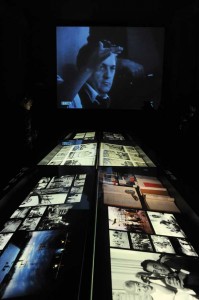When Rome’s famed Cinecittà cinema studio complex opened its doors for a Fellini exhibition in 2011, visitors could walk onto film sets including replicas of a stretch of 19th century Broadway used in Gangs of New York and the sprawling ancient Roman Forum built for the BBC television series Rome. Cinecittà was built in 1937 under dictator Benito Mussolini, who valued film-making as an important propaganda tool. During its so-called Hollywood-on-the-Tiber heyday of the 1950s and ’60s, the studio complex hosted major international productions including Cleopatra, starring Elizabeth Taylor and Richard Burton, and the multiple-Oscar winning Ben-Hur, starring Charlton Heston.

